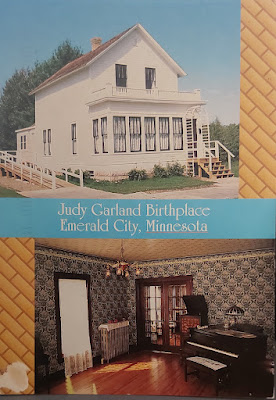 |
| Alvar Aalto finlandia hall |
Postcards is wonderful way to discover world culture,every day i wish to find a new card in mailbox, it's amazing.
Dec 25, 2024
EDMUND FITZGERALD
It's the most famous shipwreck to have occurred on the Great Lakes. On November 10, 1975, the SS Edmund Fitzgerald sank, body and all, during one of those storms that make navigation on Lake Superior so formidable at this time of year.
Dec 24, 2024
Dec 22, 2024
Independence NATIONAL HISTORICAL PARK
 |
| Independence NATIONAL HISTORICAL PARK |
Assembly Room
Within this room American independence was declared, a successful war was directed, and the U.S. Constitution was written. Delegates to the Second Continental Congress (1776) and the Constitutional Convention (1787) sat in Windsor chairs around baize-covered tables. The President's chair is the original one occupied by George Washington as he presided over the Constitutional Convention.
Dec 21, 2024
L’Anse aux Meadows,Newfoundland
 |
| L’Anse aux Meadows,Newfoundland |
Canada’s inaugural UNESCO site, the Viking settlement at the tip of Newfoundland’s Great Northern Peninsula, was the first real evidence that these European adventurers had reached the new world over 1,000 years ago – long before Columbus. The excavated remains of wood-framed, peat-turf buildings are similar to those found in Norse Greenland and Iceland, and are the only authenticated site in North America. You will be able to see how the Vikings lived and enjoy tales of their adventures long ago.
Source:
https://www.newfoundlandlabrador.com/trip-ideas/travel-stories/five-unesco-sites
Lake Baikal
 |
| Lake Baikal |
Lake Baikal is an immense freshwater expanse of 31,722 square kilometres under UNESCO protection. It is known for its unique ecosystems and pristine drinking water. Due to climate change, the lake's surface temperature during the summers of recent years has increased significantly, triggering numerous surface eutrophication effects and threatening the biodiversity of this fragile and precious ecosystem.
Source:
https://www.copernicus.eu/fr/node/10997
Stamps:
Butterflies in your dreams
Dec 19, 2024
Schloss Petershagen
 |
| Schloss Petershagen |
Schloss Petershagen
Schloss Petershagen, nestled in the charming town of Petershagen in North Rhine-Westphalia, Germany, is a historical gem that has stood the test of time. Built initially as a water castle in 1306, this remarkable structure has evolved through the centuries, showcasing the architectural splendor of the Weser Renaissance. Today, it stands as a testament to the rich history and cultural heritage of the region, inviting visitors to explore its storied past and picturesque surroundings.
The Origins of Schloss Petershagen
The origins of Schloss Petershagen date back to the early 14th century when it was constructed by Bishop Gottfried von Waldeck of Minden. Originally built as a defensive fortress, the castle was strategically positioned to protect the northern territories of the Bishopric of Minden. Dedicated to Saint Gorgonius, the castle was a symbol of the bishop's authority and a bulwark against potential invaders.
In the mid-16th century, under the direction of Bishop Franz von Waldeck, the fortress underwent a significant transformation. The Swabian master builder Jörg Unkair was commissioned to convert the medieval stronghold into a magnificent Renaissance-style palace. Using both dark Porta sandstone and light Obernkirchen sandstone, Unkair crafted a stunning example of early Weser Renaissance architecture. Although the construction was cut short due to the Schmalkaldic War, the castle's distinctive features, including an irregular two-wing layout, a polygonal stair tower, and a bastion facing the Weser River, remain notable highlights.
From Fortress to Residence
Throughout its history, Schloss Petershagen played a pivotal role in the region's political and military affairs. During the Thirty Years' War, the castle, like much of the Prince-Bishopric of Minden, fell under Swedish occupation. Following the Peace of Westphalia in 1648, the territory was ceded to Brandenburg-Prussia, and the castle became the seat of the governor of Minden from 1649 to 1659. It was within these walls that the Great Elector Frederick William received homage as the new sovereign in 1650.
After the seat of government moved from the castle in 1669, the once-mighty fortress began to decline. Several buildings collapsed or were demolished, and a fire in 1780 destroyed the main staircase roof. However, the late 19th and early 20th centuries brought a revival of interest in the castle. In 1901, Heinrich Hestermann, a farmer and Reichstag deputy, purchased the property and initiated renovations to restore it to a habitable state.
Source
https://www.mycityhunt.com/cities/petershagen-de-2151/poi/schloss-petershagen-22562












































